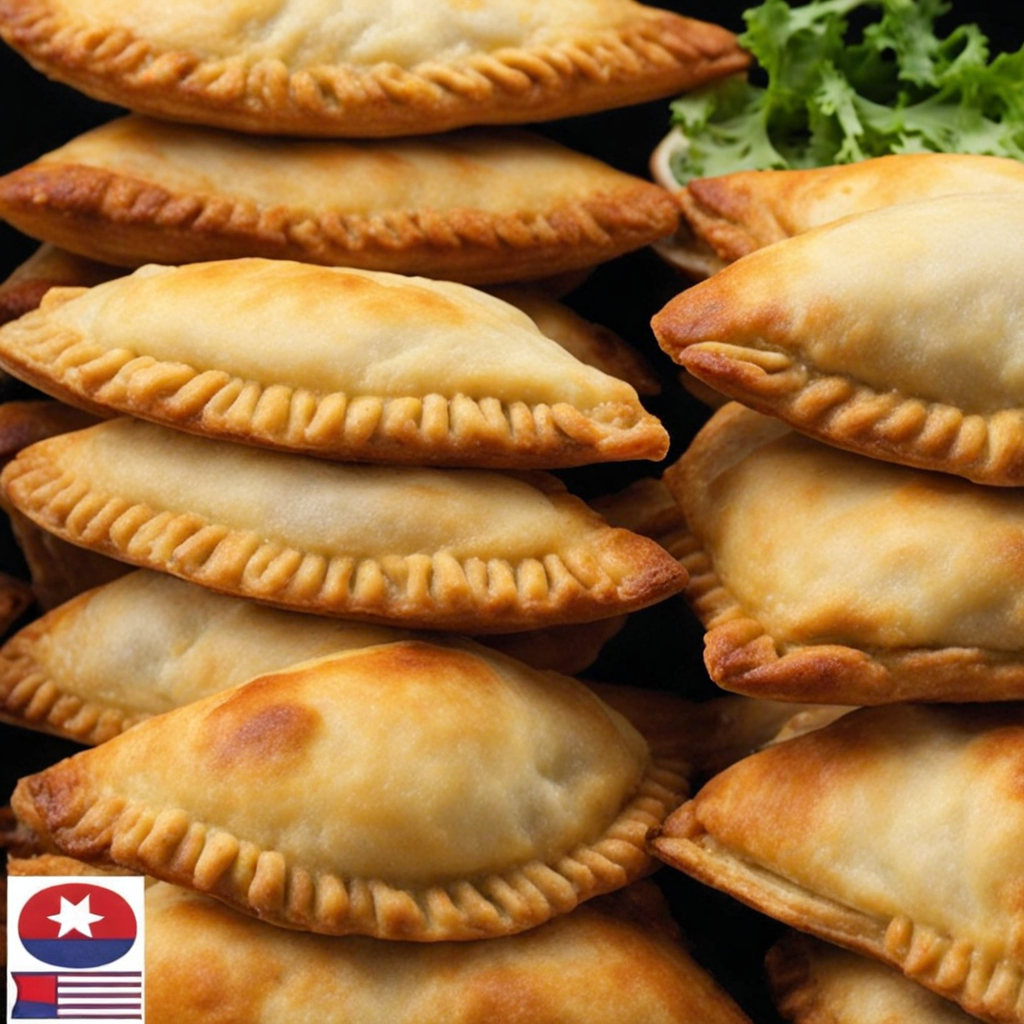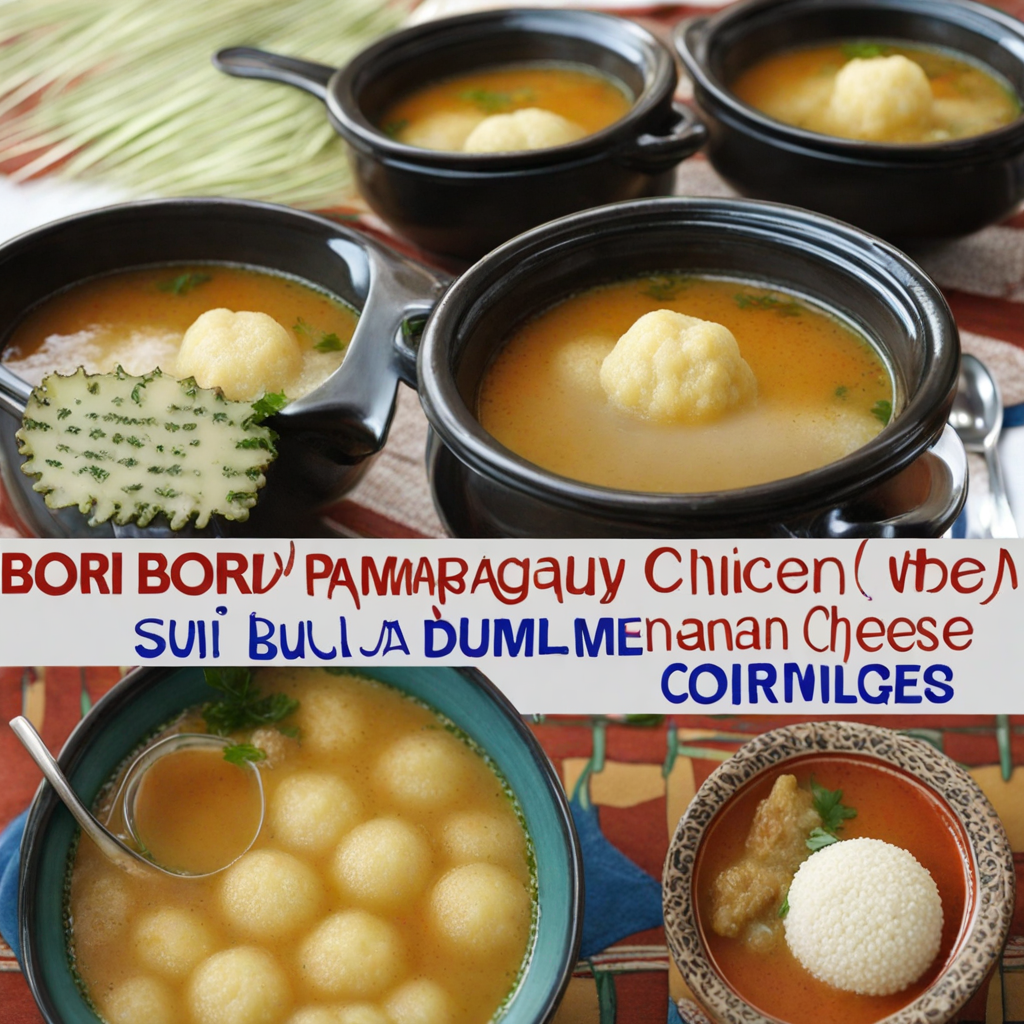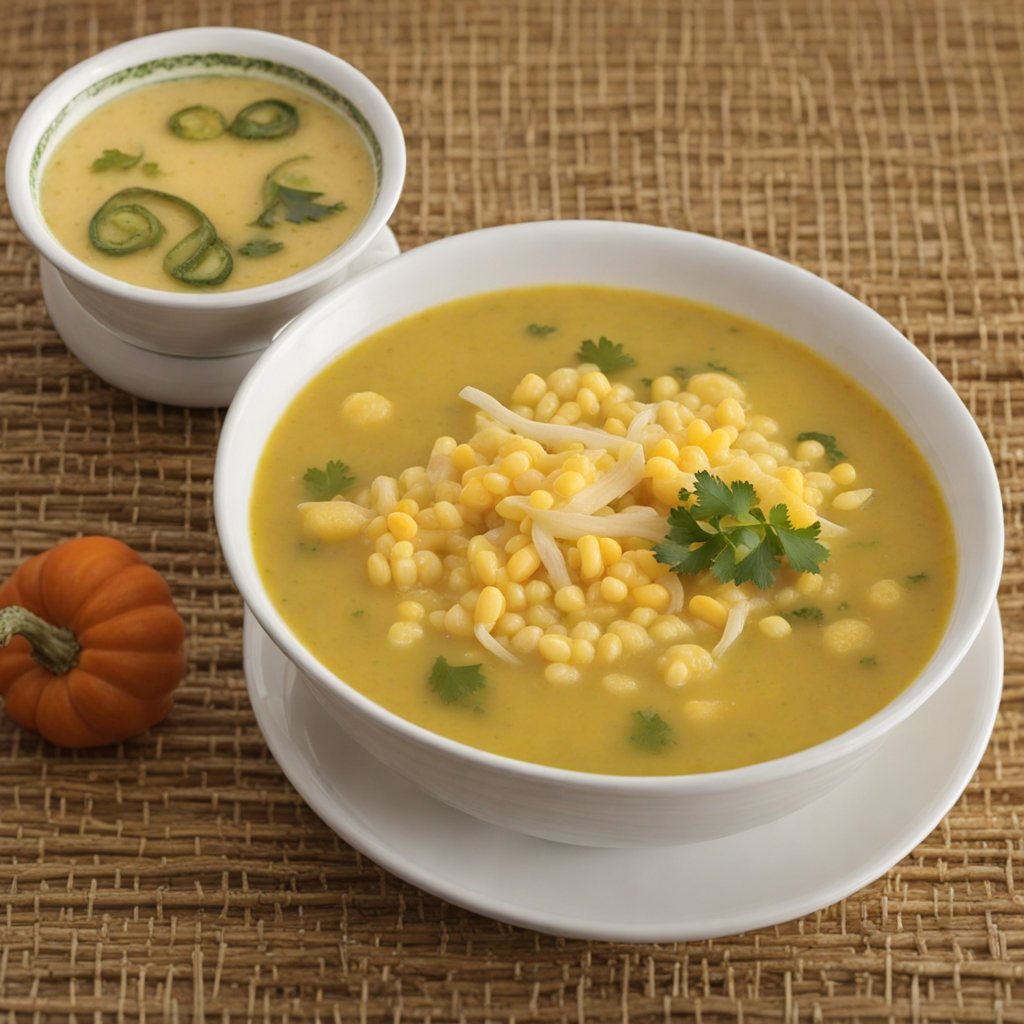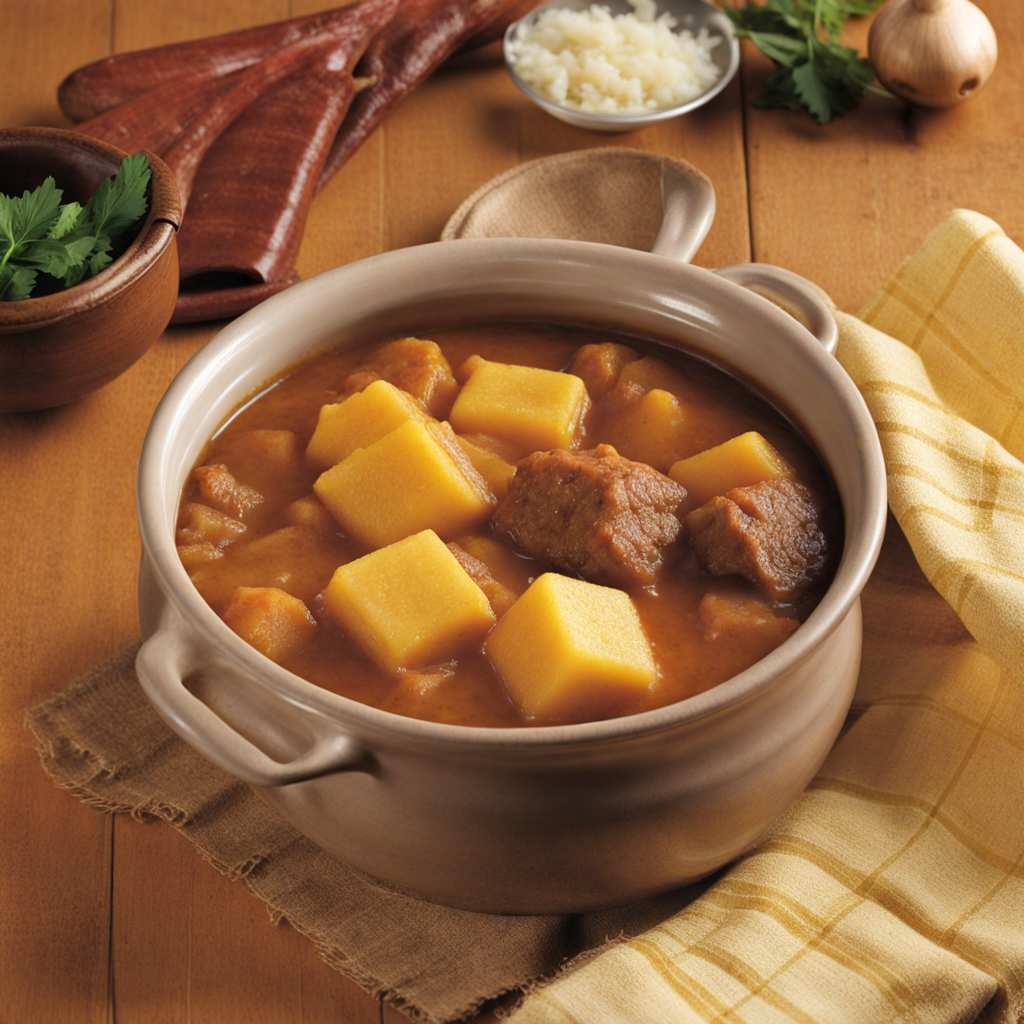Paraguayan Empanada
Paraguayan Empanada, also known as "empanada paraguaya," is a delightful pastry that perfectly captures the essence of Paraguayan cuisine. Made with a unique dough that often incorporates corn flour, these empanadas are distinctively thicker and heartier than their counterparts found in other Latin American countries. The filling is typically a savory mixture of cheese, onions, and sometimes ground meat or vegetables, resulting in a comforting and flavorful bite. The combination of textures—from the crispy outer crust to the gooey, melty interior—creates a satisfying experience for the palate that is both rustic and deeply satisfying. One of the standout features of Paraguayan Empanadas is their versatility. While cheese is a common filling, variations can include ingredients such as chicken, beef, or even sweet options with fruits. The use of local ingredients and traditional cooking methods, often baked or fried to perfection, gives these empanadas a unique character that reflects the rich culinary heritage of Paraguay. Each bite is a celebration of flavors, with the cheese often providing a creamy richness that is beautifully complemented by the aromatic sautéed onions. To fully appreciate Paraguayan Empanadas, they are often enjoyed with a side of spicy salsa or a refreshing salad, which enhances the overall experience. Whether served as a snack, appetizer, or part of a hearty meal, these empanadas are a beloved staple in Paraguayan households, embodying the warmth and hospitality of the country. Discovering this dish is not just about tasting food; it's about indulging in a slice of Paraguayan culture that invites you to savor its unique flavors and traditions.
How It Became This Dish
The History of Empanadas in Paraguay: A Delicious Journey Through Time #### Origins The empanada, a delightful pastry filled with a variety of ingredients, has a rich history that spans continents and centuries. While its exact origins are difficult to pinpoint, empanadas are believed to have descended from the concept of stuffed breads that have existed since ancient times. The term "empanada" comes from the Spanish verb "empanar," which means "to wrap in bread." This culinary tradition is thought to have originated in the Iberian Peninsula during the Middle Ages, where cooks began wrapping meats and vegetables in dough to make them easier to transport and consume. As Spanish colonizers traversed the globe, they brought their culinary traditions with them. The empanada found its way to Latin America, where it adapted to local ingredients and cooking styles, leading to a variety of regional interpretations. In Paraguay, empanadas took on a unique character, blending indigenous ingredients and culinary practices with European influences, particularly from Spain and Portugal. #### Cultural Significance In Paraguay, empanadas are more than just a snack or meal; they are a symbol of national identity and cultural heritage. The empanada is deeply embedded in Paraguayan social life, often served at family gatherings, festivals, and communal celebrations. The pastry's versatility allows for a wide range of fillings, including beef, chicken, pork, cheese, and vegetables, often seasoned with local spices and herbs. This adaptability makes empanadas a perfect representation of Paraguayan hospitality, as they can be tailored to suit individual tastes and preferences. Traditionally, empanadas are associated with the celebration of special occasions and holidays. For instance, during the national celebrations on May 14 and 15, which commemorate Paraguay's independence, empanadas are a staple on the festive table. They are often accompanied by tereré, a traditional Paraguayan drink made from yerba mate, which complements the savory flavors of the pastry. The act of sharing empanadas with family and friends is a cherished ritual, reflecting the warmth and communal spirit that characterizes Paraguayan culture. #### Development Over Time The development of Paraguayan empanadas has been influenced by various historical and social factors. In the early 20th century, as Paraguay experienced waves of immigration, particularly from Europe and neighboring countries, new ingredients and culinary techniques began to shape the empanada. Italian immigrants, for instance, introduced new types of cheese and herbs, enriching the flavor profiles of the traditional empanada filling. In rural areas, the empanada became a staple food for the working class, particularly among farmers and laborers. Its portability made it an ideal meal for those on the go, whether they were heading to the fields or participating in community events. The empanada's practicality and affordability contributed to its widespread popularity, allowing it to transcend socioeconomic boundaries. As urbanization increased in the latter half of the 20th century, traditional recipes began to evolve. Street vendors and local eateries started to experiment with different fillings and cooking methods, leading to the emergence of new variations of the empanada. Today, you can find empanadas stuffed with everything from traditional meats and cheeses to modern twists like chicken with curry or vegetarian options featuring local produce. Furthermore, the rise of globalization and the internet has allowed for a greater exchange of culinary ideas. Paraguayans living abroad have shared their empanada recipes with new audiences, while international food festivals and cultural events have introduced the empanada to diverse palates around the world. This global interest has not only helped to preserve traditional recipes but has also inspired innovative approaches to empanada-making. #### Modern Interpretations Today, Paraguayan empanadas continue to thrive as a beloved food, both within the country and beyond its borders. Modern interpretations often showcase local ingredients and culinary creativity. For instance, some chefs are exploring the use of gluten-free flours to cater to dietary restrictions, while others are incorporating fusion elements by blending traditional Paraguayan flavors with international cuisines. Empanadas are not only found in homes and local markets but have also made their way into upscale dining establishments. Chefs are taking the humble empanada to new heights, presenting them as gourmet dishes filled with high-quality ingredients and paired with artisanal sauces. This evolution reflects a broader trend in gastronomy, where traditional foods are reimagined and celebrated in contemporary culinary contexts. #### Conclusion The empanada is a testament to the resilience and adaptability of Paraguayan cuisine. From its medieval Iberian roots to its status as a cherished national dish, the empanada has woven itself into the fabric of Paraguayan culture. Its significance goes beyond mere sustenance; it represents a connection to heritage, community, and the shared joy of food. As Paraguay continues to embrace its culinary diversity, the empanada remains a beloved symbol of national pride. Whether enjoyed at a festive gathering, a family meal, or as a quick snack on the go, empanadas encapsulate the flavors, traditions, and stories of the Paraguayan people. As this iconic dish continues to evolve, it will undoubtedly remain a cornerstone of Paraguay’s culinary landscape for generations to come.
You may like
Discover local flavors from Paraguay







